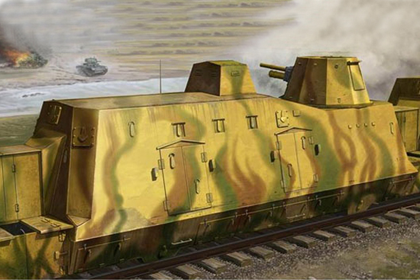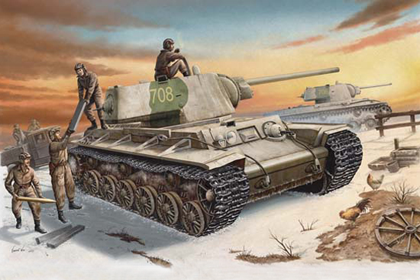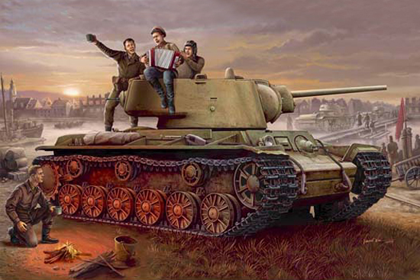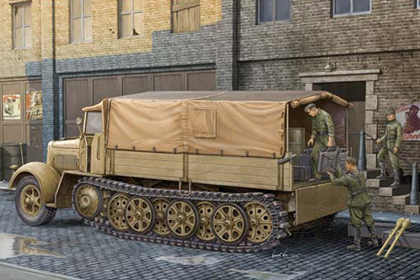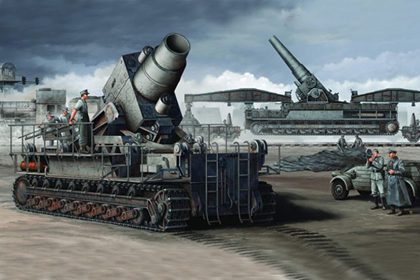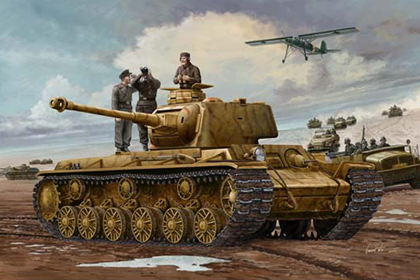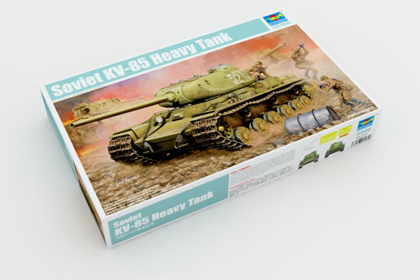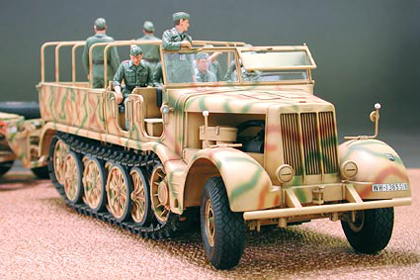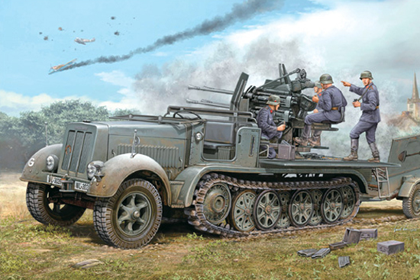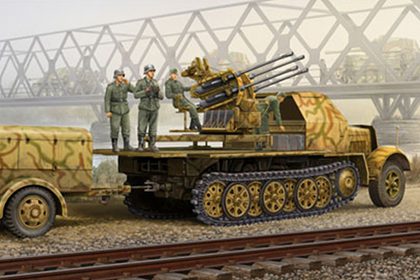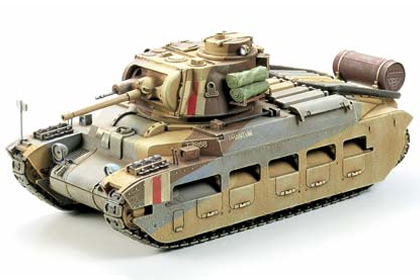This is the Trumpeter 00215 kit in 1/35 scale, of the ‘German Mörser Karl – Great 040/041’.
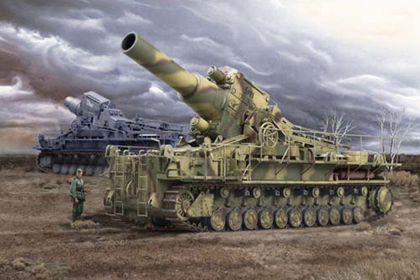
History
At a conference with Hitler in March 1943, it was stated that the first 54cm Gerat 041 would be delivered by June 1943, and the third, by mid-August. The 60cm and 54cm barrels appear to have been interchanged as required. In 1945, US forces captured vehicle II with a 60cm, and vehicle V with a 54cm. The prototype chassis, built in 1939, had eight road wheels with external swing arms. Production Karl had eleven road wheels.
Ammunition was transported in a tracked Munitionsschlepper converted from the Pz.Kpfw.IV, four rounds in each Schlepper. For the 60cm Gerat 040, the s Be Granate weighed 2.117 tons and the Ie Be Granate, 1.70 tons; in this case of the 54cm Gerat 041, 1.58 tons and 1.25 tons respectively. Maximum rate of the fire was 6 rph (rounds per hour). Guns I-IV went to the Russian Front in July 1941 with the 628th schwere Artillerie Abteilung. They saw action at various sites, including Lemburg in that year.
The best known action was against Sevastopol in 1942. Later, four guns were issued to the 833rd schwere Artillerie Abteilung (mot). These guns had the names Adam, Eve (1st Batt.) and Thor, Odin (2nd Batt.) The names for guns V and VI were Loki and Ziu.
